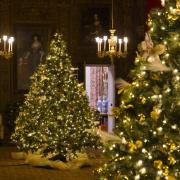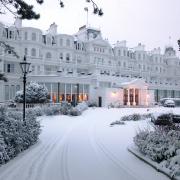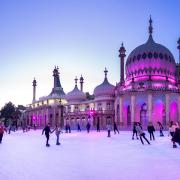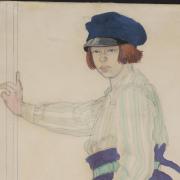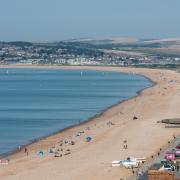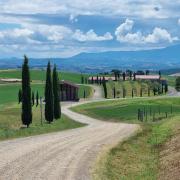Once the most famous pirate port around, Rye has changed over the centuries to become an historic Sussex gem and magnet for visitors from all over the world

MERMAID STREET
Now one of the most Instagram-friendly streets in the world, Mermaid Street’s cobbles and the many, many historical buildings going up the hill are a truly breath-taking sight. It’s quite difficult to imagine back to Victorian times, when it was actually a fairly rundown part of the town.

THE MERMAID INN
You know you’re dealing with a town full of very old things when the sign on the front of The Mermaid Inn says ‘Rebuilt in 1420’. It turns out it also has cellars dating from the 1100s. During the 1700s, the inn was closely associated with the Hawkhurst Gang, a notorious crowd of smugglers and criminals closely associated with Rye, Winchelsea and the famous old smuggling routes of East Sussex. After their base at The Oak and Ivy Inn at Hawkhurst, this was their second home. Naturally, stories of haunted parts of the hotel are legion.

KINO BAR AND CAFE
It’s not an unusual story these days: a deconsecrated chapel is turned into something useful rather than being knocked down. This time, it’s been transformed into a cinema, using the German word Kino. It is also a licensed bar and cafe.

TOWN HALL
Rye Town hall dates from 1742 and is Grade II* listed, an upgrade from an ordinary Grade II listing. This puts it in the top 4% of listed buildings in the country.

CHURCH SQUARE
Church Square, next to St Mary’s, in the Citadel area of town, is quite a sight. A medieval cobbled street with 16th century timbered houses, some with an overhanging upper storey and leaded windows, it looks like a film set that has somehow come to life.

THE LANDGATE
The Landgate is one of four gates built in 1329 and the only one remaining. It’s amazing that it has lasted this long - I hope it lasts another 700 years. The clock, incidentally, was added in 1862.

LAMB HOUSE
The home of the author Henry James from 1897 to 1914, Lamb House is now owned and run by the National Trust as a writer’s house museum. The house was built in 1722 by local merchant James Lamb. One night in 1726, King George I was on a ship washed ashore at Camber and he sought refuge in Rye. James Lamb gave the King his own bedroom and, during that night, his wife gave birth to a child. The parents called him George.

On a wall right next to Lamb House, this plaque is a sombre reminder that even this tiny corner of Sussex was affected during the last World War, when an air-raid destroyed Henry James’ old writing house in the garden of the property on August 18th 1940.

THE OLD BELL INN
There used to be a tunnel linking The Old Bell Inn, built in 1390, to The Mermaid Inn. Something to do with smugglers perhaps? Of course, it is. The pub was already 350 years old when that was going on in the 1700s. There was even a revolving cupboard at this end of the tunnel!

THE HOPE ANCHOR HOTEL
Reputed to be a one-time hideout for the notorious Tenterden Gang, the Hope Anchor Hotel at the end of Watchbell Street is a fabulous place to look out over the surrounding countryside. Built in about 1750, it is so called because an anchor was once seen as a sign of hope, used as an alternative to a crucifix as a guide for early Christians to find their secret meeting places.
READ MORE: The history of Rye in Sussex
LOCAL RESIDENTS

Matthew Prince: ‘What’s great about Rye is that we big enough to have interesting shops but too small for big companies to be interested in. That’s why this shop, Grammar School Records has been here for 31 years. If we were in a smaller town, we might not be able to survive, but if we were in a bigger town, we’d never afford the rents. Rye is getting full of tourists again now – maybe not quite the same amount as before the pandemic but we are getting there.’

Mike Berry: ‘We are a port and most of our buildings date from at least the Tudor period. Rye certainly has character and a long and varied history. We’re on the Brighton to Ashford rail line, which is a small branch line, but we can get the high-speed trains from Ashford. It’s stuffed with pubs and restaurants which are all pretty good. My wife and I own a small holiday let and we have been packed out and have bookings months ahead.’

Tony Dagleas: ‘I’ve lived in Rye for 35 years. What I love most about it, personally, is its variety. The transport links are really rather good. Quite a few people travel to and work in London. The bus service is really excellent, taking you through some really lovely countryside. The community spirit is sensational. We have our own amateur dramatic society, our own group of singers - The Rye Singers - who perform locally. Recently people have flooded back to Rye and one of the great things is the parking in the Cattle Market. You can stay there all day for £2.50 and that is brilliant for visitors.’



